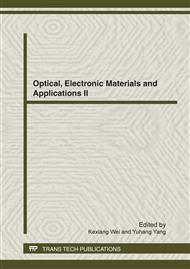p.154
p.159
p.164
p.169
p.175
p.180
p.186
p.190
p.195
One Test System Design of Static Stiffness for Machine Tools
Abstract:
Computer is regarded as a center of signal detection, data processing and control in this system, accompanied by precision displacement sensors, pressure sensors and stepper motors and drives. Realize the transition of analog to digital with A/D converter board by VB6.0, and load simulation device steady and uniform by stepper motor, at the same time realize the functions of data calculation processing, storage, querying and sample curve drawing. The experimental results shows that the system has the advantages of a high degree of automation, high test efficiency, high precision, high reliability, stability test performance.
Info:
Periodical:
Pages:
175-179
Citation:
Online since:
June 2012
Authors:
Keywords:
Price:
Сopyright:
© 2012 Trans Tech Publications Ltd. All Rights Reserved
Share:
Citation:


